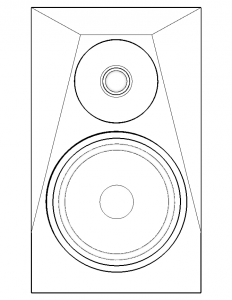I'm following UweG's advice, to open a topic on this.
I've been tinkering for some time now on a loudspeaker using the AL170 and G25FFL+WG combination.
Until now it is quite interesting as far as I can tell.
Originally it was an all-3rd-order crossover.
Recently I had some ideas to turn back to all-2nd-order, as I had the feeling that it sounded better.
Here would be some graphs from the simulator, the project file, and an on-axis Arta measurement (BOX_R_current_2nd_order*).
Then, after reading some info about the energy frequency response, I've made some possible tweaks (BOX_R_current_2nd_order_tw5uf_variant*).
Any comments?
 But, if the Energiefrequenzgang has a slope, the Box sounds too dull, therefore you should lift the frequencyresponse a little bit like the optimizer did.
But, if the Energiefrequenzgang has a slope, the Box sounds too dull, therefore you should lift the frequencyresponse a little bit like the optimizer did.
Kommentar